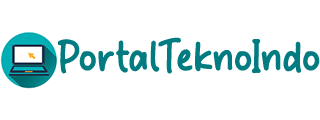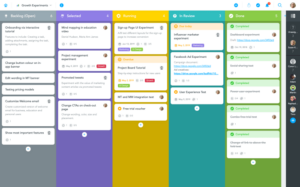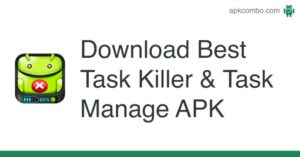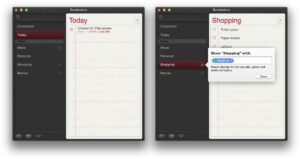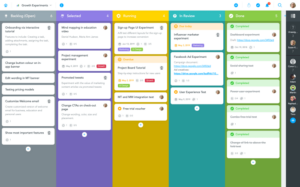In the realm of productivity and efficiency, the best task management system emerges as an indispensable tool, empowering individuals and teams to conquer their to-do lists and achieve unparalleled success. Join us as we delve into the intricate world of task management systems, exploring their core functionalities, user-friendly interfaces, seamless integrations, robust security measures, and value-driven pricing models.
Prepare to elevate your productivity game and discover the secrets to unlocking your true potential.
As we embark on this journey, we will dissect the anatomy of the best task management systems, uncovering the features that set them apart. We will examine cloud-based, on-premise, and mobile solutions, unraveling their strengths and suitability for diverse work environments.
By understanding the benefits of implementing a task management system, you will gain insights into improved productivity, enhanced collaboration, and impeccable organization.
System Functionality
The best task management systems offer a comprehensive suite of features and capabilities to help individuals and teams organize, prioritize, and track their tasks effectively.
These systems are typically cloud-based, providing anytime, anywhere access via web browsers or mobile apps. They also offer a variety of integrations with other productivity tools, such as calendars, email, and file sharing services.
Benefits of Using a Task Management System
The benefits of using a task management system are numerous and well-documented. These systems can help improve productivity by providing a centralized location to track tasks, set priorities, and manage deadlines. They can also improve collaboration by allowing team members to share tasks, assign responsibilities, and track progress.
In addition, task management systems can help improve organization by providing a structured way to capture and manage tasks. This can help reduce stress and improve focus by providing a clear overview of what needs to be done and when.
User Interface and Usability: Best Task Management System
The user interface (UI) of a task management system plays a pivotal role in determining its overall user experience. A well-designed UI enhances productivity, simplifies task management, and encourages user adoption.
Intuitive navigation allows users to effortlessly find the features and functions they need. A clear and logical menu structure, along with recognizable icons and visual cues, helps users quickly access relevant information and complete tasks efficiently.
Customizable Views
Customizable views enable users to tailor the task management system to their specific needs. They can choose to view tasks by priority, due date, or other criteria, creating a personalized and efficient workflow.
Drag-and-Drop Functionality
Drag-and-drop functionality provides a user-friendly way to manage tasks. Users can easily move tasks between different lists, adjust priorities, and rearrange schedules, enhancing flexibility and control.
Examples of Exceptional User Interfaces
- Asana:Known for its clean and intuitive interface, Asana allows users to create projects, assign tasks, and track progress seamlessly.
- Trello:Utilizes a Kanban-style board interface, enabling users to visualize tasks and workflows in a visually appealing and organized manner.
- Todoist:Features a minimalistic and distraction-free interface, allowing users to focus on completing tasks without unnecessary clutter.
Integrations and Compatibility
Task management systems are most effective when they can seamlessly integrate with other tools and applications that you use. This allows you to manage all of your tasks in one place, without having to switch between different programs.
Effective task management is essential for productivity, and with the advancements in technology, numerous systems are available to assist users. While language learning apps have proven to be highly effective in language acquisition, task management systems remain indispensable tools for organizing and prioritizing tasks, setting deadlines, and tracking progress.
By leveraging the capabilities of both language learning apps and task management systems, individuals can enhance their productivity and achieve their goals efficiently.
There are many different types of integrations available, including:
- Calendar integration: This allows you to see your tasks alongside your appointments and events.
- Email integration: This allows you to create tasks from emails, and to track the status of tasks that you have sent to others.
- CRM integration: This allows you to track the status of tasks that are related to specific customers or projects.
Some of the best task management systems offer robust integrations with a variety of other tools and applications. This can help you to streamline your workflows and to be more productive.
Examples of Task Management Systems with Robust Integrations, Best task management system
- Asana: Asana integrates with over 100 other tools and applications, including Google Calendar, Gmail, Salesforce, and Dropbox.
- Trello: Trello integrates with over 50 other tools and applications, including Google Drive, Evernote, and Slack.
- Todoist: Todoist integrates with over 60 other tools and applications, including Google Calendar, Gmail, and Amazon Alexa.
Security and Data Protection
Ensuring the security and privacy of user data is paramount for any task management system. To protect sensitive information, reputable systems employ robust security measures.
Data Encryption
Encryption safeguards data by scrambling it using algorithms, making it unreadable to unauthorized parties. Task management systems often encrypt data both at rest (stored on servers) and in transit (transmitted over networks). This prevents data breaches and ensures that only authorized users can access information.
Access Control
Access control restricts who can access and modify data within the system. Granular permissions can be set, allowing different levels of access based on user roles or specific tasks. This ensures that only necessary personnel have access to sensitive information, minimizing the risk of unauthorized disclosure or modification.
Compliance with Industry Standards
To ensure adherence to best practices, many task management systems comply with industry standards such as ISO 27001 and SOC 2. These certifications provide independent verification of the system’s security controls, data protection measures, and operational processes. Compliance with industry standards assures users that their data is handled securely and in accordance with recognized security frameworks.
Examples of Task Management Systems with Strong Security Features
* Asana:Asana uses SSL/TLS encryption, role-based access control, and two-factor authentication to protect user data.
Trello
Trello employs AES-256 encryption for data at rest and SSL/TLS for data in transit. It also offers granular permissions and compliance with ISO 27001 and SOC 2 Type II.
ClickUp
ClickUp utilizes end-to-end encryption, multi-factor authentication, and role-based access control. It is also compliant with ISO 27001 and GDPR.These systems demonstrate a commitment to data privacy and security by implementing comprehensive measures to protect user information from unauthorized access, modification, or disclosure.
Pricing and Value
The pricing models of task management systems vary depending on the features offered, the number of users, and the level of support required. Some systems offer a free tier with basic features, while others charge a monthly or annual fee for access to more advanced features.
Some systems also offer enterprise pricing for businesses with a large number of users.
When choosing a task management system, it is important to consider the value proposition of each system and how it justifies the cost. Some systems may offer a wide range of features at a low cost, while others may offer more specialized features at a higher cost.
It is important to choose a system that meets the needs of your business and that provides value for the money.
Pricing Tiers
Many task management systems offer different pricing tiers with varying features and capabilities. The most common pricing tiers are:
- Free:Free tiers typically offer basic features such as task creation, task management, and collaboration. They are a good option for individuals or small teams who do not need advanced features.
- Premium:Premium tiers typically offer more advanced features such as project management, time tracking, and reporting. They are a good option for teams who need more functionality and support.
- Enterprise:Enterprise tiers typically offer the most advanced features and support. They are a good option for large businesses with complex needs.
Value Proposition
The value proposition of a task management system is the unique combination of features and benefits that it offers. When evaluating the value proposition of a system, it is important to consider the following factors:
- Features:The features of a task management system are the core functionality that it offers. When evaluating features, it is important to consider the specific needs of your business.
- Benefits:The benefits of a task management system are the tangible and intangible advantages that it can provide to your business. When evaluating benefits, it is important to consider the specific goals that you are trying to achieve.
- Cost:The cost of a task management system is an important factor to consider. When evaluating cost, it is important to consider the total cost of ownership, including the cost of the software, the cost of implementation, and the cost of ongoing support.
Outcome Summary

Our exploration concludes with a comprehensive analysis of the pricing models employed by the best task management systems. We will decipher the various pricing tiers and the features associated with each level, empowering you to make informed decisions based on your specific needs and budget.
By weighing the value proposition of each system against its cost, you will gain a clear understanding of the return on investment and the potential for maximizing your productivity.
As you embark on your quest for the ultimate task management system, remember that the journey itself is as important as the destination. Embrace the opportunity to explore different options, evaluate their strengths and weaknesses, and ultimately choose the solution that resonates with your unique workflow and aspirations.
With the right task management system at your fingertips, you will unlock the power to conquer your to-do lists, streamline your workflow, and achieve unparalleled success.
